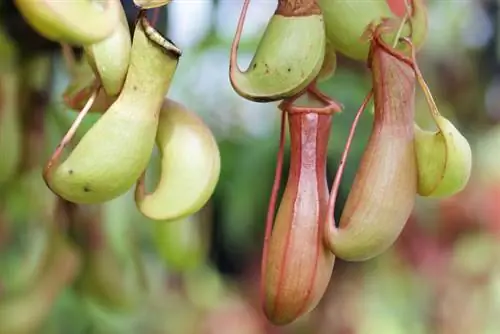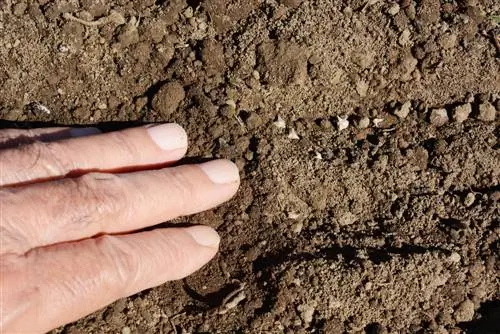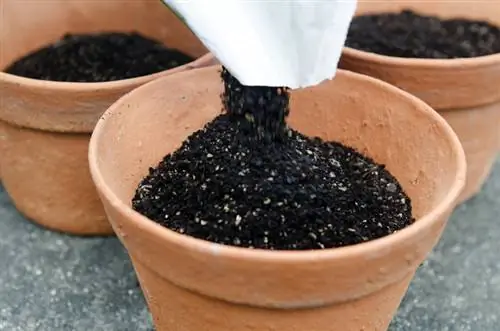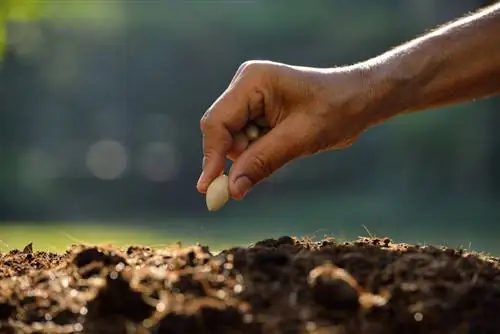- Author admin [email protected].
- Public 2023-12-16 16:46.
- Last modified 2025-01-23 11:20.
Propagate Nepenthes (pitcher plants) from seeds is very time-consuming and not recommended for inexperienced gardeners. It's not just difficult to obtain viable fresh seeds. The sowing itself also presents the breeder with many challenges. Tips for Propagating Nepenthes from Seeds.

How to propagate Nepenthes from seeds?
To propagate Nepenthes from seeds, you need fresh seeds, which are spread thinly on moist growing substrate. The sowing containers are covered with a plastic film and germinate after a few months in high humidity and warmth.
Where do you get fresh seeds?
A big problem is obtaining fresh seeds for Nepenthes. The plant produces both female and male flowers. The male flowers have an unpleasant smell that attracts insects. The flowers develop into three-fold seed capsules in which up to 500 very fine seeds mature.
If the pitcher plant is grown indoors, the flowers, which bloom from March to September, must be fertilized themselves. Upland pitcher plants can be left outside in the summer to be fertilized by bees, beetles and other insects. This is not advisable for lowland varieties.
You can also purchase Nepenthes seeds from specialist retailers (€3.00 on Amazon). However, only fresh seeds germinate, so propagation via seeds often fails due to the age of the seeds.
How to sow Nepenthes seeds?
Every hobby breeder has their own preferences. Various materials can serve as a basis:
- Peat
- pulp
- peat moss (sphagnum)
- Coco Hum
The seeds are spread as thinly as possible and not covered with substrate.
In order to keep the humidity constant, it makes sense to cover the sowing containers with transparent plastic film. The foil must be ventilated from time to time to prevent the seeds from becoming moldy.
Prick out after emergence
It can take months for the seeds to germinate. It is important that they never dry out completely and that they stay nice and warm.
As soon as the first seedlings appear, you should prick them out and only leave the strongest ones. Don't wait too long before planting, especially if you have sown on pulp.
The roots of Nepenthes seedlings are very delicate. They break off easily when removed from the growing substrate. Therefore, plant in carnivore soil while the roots can still be easily removed from the growing container.
Tip
Nepenthes is an endangered species almost everywhere in the world and is protected. When purchasing plants or seeds abroad, be sure to only order cultivated seeds or cultivated plants. Otherwise you may commit a criminal offense.






